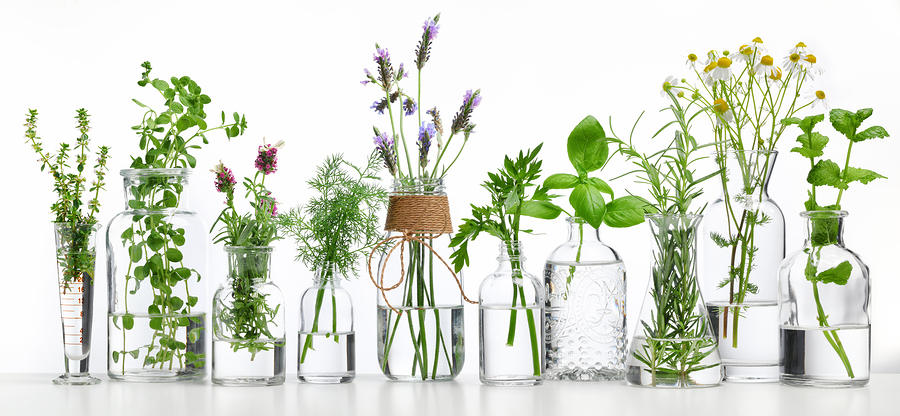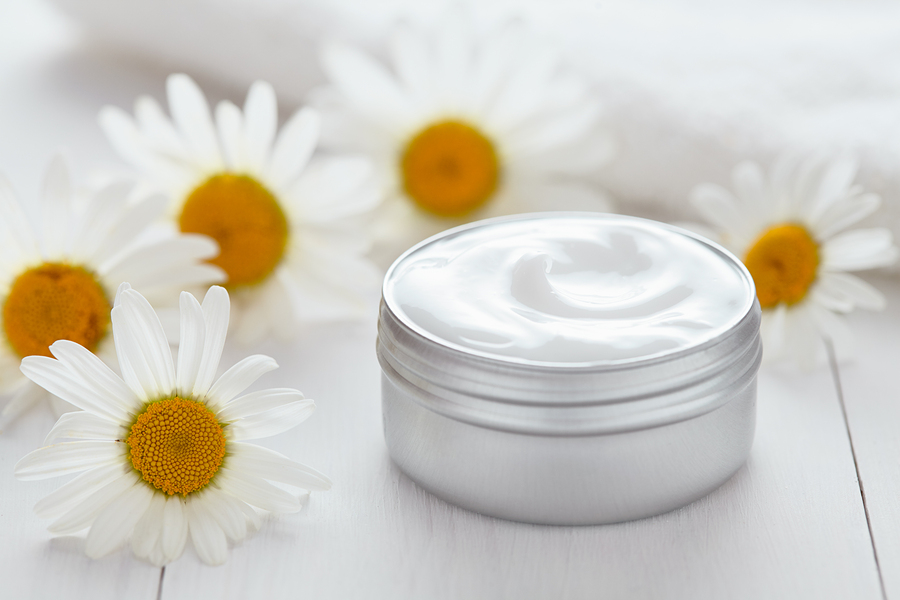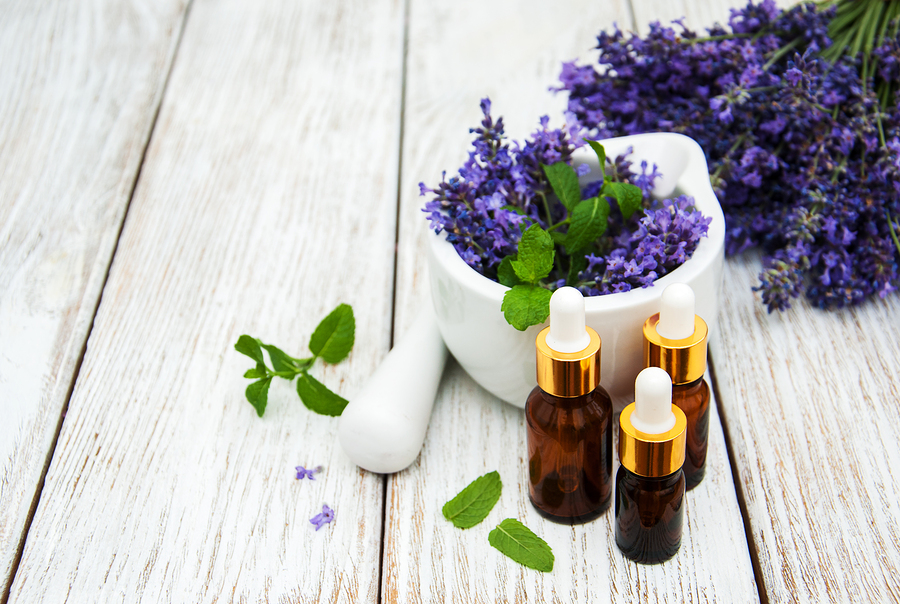- Make It Yourself Lavender Heart-Shaped Bath Bombs!
- 20 Things You Never Knew About “Down There”
- 12 Best Foods For Those Suffering From Arthritis Pain
- 12 Personal Hygiene Mistakes Almost Everyone Makes (Mom Never Told You About #4!)
- 15 Medicinal Plants And Herbs From The Cherokee People
- 12 Mind-Blowing Benefits Of Drinking Coconut Water During Pregnancy
- 12 Outstanding Winter Foods That Won’t Fatten You Up Like A Christmas Turkey
12 Fantastic Herbs To Fight Acne (Love #10!)

Photo credit: bigstockphoto.com
Acne, no matter your age, is an embarrassing problem to deal with. It’s ugly, it’s annoying, it’s painful, and it makes you self-conscious.
When sebum gets trapped in the pores, bacteria begins to grow, the skin becomes inflamed and acne results. Acne is not generally considered to be severe (no matter how bad we might think it looks) unless nodules or cysts are present. Nodules are large, red bumps with no “head”. They have very hard surfaces that are painful. Cysts are when these nodules fill with pus as a result of the increased bacterial growth.
There are plenty of over-the-counter remedies, but if they work so well, you have to ask yourself: Why do they come out with new products every year? You can see a doctor, but they will only prescribe chemicals. Many studies have shown that most herbs and other natural treatments work just as well as these chemicals. Why waste your money and fill your body with more chemicals than you are already exposed to on a daily basis?
Keep reading. We have 15 of the best herbs and natural treatments known to fight acne quickly with amazing results. One of these is sure to work for you!
1. Green Tea
This is an ancient Chinese remedy. Green tea is combined with honeysuckle and sold throughout Asia as “pimple tea.” Green tea is high in antioxidants that stop free radicals from damaging the skin and causing hormonal imbalances.
2. Burdock Root
Burdock root has a long history of being used as treatment for acne as well as eczema and acne rosacea. It is known to be a blood purifier and a diuretic, which cleanses the body of acne-causing bacteria. Studies show that this root has antimicrobial compounds, which reduce inflammation. Burdock root is generally consumed as a tea. Drink three to four cups of tea each day for best results.
3. Olive Leaf Extract
This remedy is taken from the leaves of Olea Europaea — olive trees to you. The extract from the leaves of these trees has antimicrobial as well as antioxidant power. Consumed orally, olive leaf extract detoxifies the body while regulating hormones. This extract will kill the bacteria that can lead to the formation of acne.
Continue to Page 2

Photo credit: bigstockphoto.com
4. Chamomile
The medicinal use of chamomile dates back as far as ancient Egypt. Today, chamomile is generally consumed as a tea and sold as a sedative. Chamomile tea can also be used topically as treatment to calm and tone the skin. This herb also has lightening effects on the skin, which can lead to a reduced appearance of acne scars. Chamomile also has anti-inflammatory compounds that can go a long way toward the improvement of many skin disorders, including acne. In fact, chamomile is so soothing to the skin, you will find it in many acne treatment products commercially sold today. There don’t appear to be any side effects to using chamomile. Applying a heat compress to the face, then applying chamomile tea bags to the affected areas appears to be the best method of preventing and treating acne.
YOU MIGHT ALSO LIKE: DIY Remedy and Tips to Fight Acne Video
5. Dong Quai
Sometimes referred to as female ginseng, dong quai has been used traditionally as a uterine tonic and to regulate hormones in women. Do not use this herb if you are pregnant, nursing or if you are trying to become pregnant.
Dong quai comes from the dried root of the angelica sinensis plant. It can help with acne because it contains estrogen-like substances. An increase in male androgen hormones is often the root cause of acne, even in women. Estrogen is a powerful female hormone that inhibits acne. Take this herb only as directed, as overconsumption can make the skin highly photosensitive.
6. Dandelion Root
Dandelion root has been used as a purifying herb since the 1800s. Herbalists have used the root, leaves and stem of this plant to make teas and tonics for multiple health problems, including skin issues. Dandelion is known for detoxifying the liver, kidneys and blood. It corrects and repairs imbalances. A 2009 study showed that this common weed improves the body’s ability to fight off bacterial infections and discourage growth. Dandelion also has a healing effect on the pancreas. Since the pancreas releases insulin, it can also remove bacteria, which improves the skin’s appearance.
Dandelion root helps to balance out the body’s hormones because it is a natural diuretic. Your body removes old hormones through urine, so dandelion root will encourage your body to produce new, fresh hormones instead of paying attention to the old ones. Dandelion is also rich in vitamins A and D, which are vital for skin repair.
Continue to Page 3

Photo credit: bigstock.com
7. Gum Guggul
The flowering plant with a funny name is a very important herb in Ayurvedic medicine. It has been used extensively for thousands of years, and the sap of the plant is still used today. The gummy resin is harvested from the bark of the plant through tapping. It smells very much like myrrh and is sometimes used in incense and perfume. Gum guggul has been used traditionally to treat mouth infections, digestive issues, arthritis and high cholesterol levels, but it is also used to treat skin problems such as acne. The active ingredient is something similar to a steroid; although it works on acne is unclear. It’s believed that gum guggul has anti-inflammatory compounds that stop acne and prevent cysts. You can buy a products containing gum guggul at most health food stores. Take only as directed.
8. Eucalyptus
There are more than 600 species of eucalyptus trees. Most of them are native to Australia and have been used by the Aboriginal people for thousands of years. Eucalyptus oil has been typically used to fight cold and flu viruses, but lately the oil from this tree has been shown to fight acne and can be found in many acne face washes and skin toners. The active ingredient in eucalyptus oil, eucalyptol, has powerful antiseptic compounds. It is a powerful astringent — so powerful in fact that you should dilute it with another oil, such as olive oil, before applying it to your face so that you don’t dry out your skin. Do not put eucalyptus oil on open cuts or wounds, and avoid the eyes and inside of the nose.
9. Red Clover
Red clover has been used a treatment for respiratory problems such as bronchitis in traditional folk medicine. Sometimes called meadow clover, wild clover or cow clover, this herb is native to Europe and northwest Africa. This herb is well-known for its effectiveness in fighting all types of infection, including bacterial infections. In historical accounts, red clover is a remedy for female hormonal problems and is often used by women with fertility problems and also menopausal women.
Continue to Page 4

Photo credit: bigstockphoto.com
10. Lavender Oil
Is there anything as sweet smelling as lavender? The fact that this plant has antiviral and antibacterial compounds only makes it that more valuable. Lavender essential oil can help rejuvenate the skin and stimulates to the production of new skin cells. This oil penetrates into the skin to kill the bacteria that causes acne and cysts. It soothes the skin and eases the pain and inflammation of acne. Lavender oil might smell nice, but it is a powerful medicine that can irritate the skin if used directly. Dilute lavender oil with olive oil or grape seed oil before applying the skin. What a sweet solution this is!
11. Neem Oil
Almost every part of the neem tree has been used for centuries in traditional Indian medicine. This tree prevents inflammation, malaria, lice, and acne. Studies have shown that neem contains antiseptic, antifungal, antiviral and antibacterial compounds. You will find neem oil in soaps, ointments and other over-the-counter skin care products. You can purchase this as pure oil or in capsule form, or even in a powder that to mix with water to make a mask to kill bacteria and draw out impurities. A 2008 study showed that neem is an effective as well as safe alternative to chemical acne treatments.
SEE ALSO: Foods to EAT to Prevent Acne and Foods NOT to Eat
12. Tea Tree Oil
This oil, from the trees native to Australia, is much like eucalyptus in that it has been used by indigenous people as a remedy for skin problems. Clinical trials show that tea tree oil is very effective against many types of skin problems including acne. Tea tree oil is toxic when consumed internally. Do not apply this oil to cuts or broken skin. Test a small area first. If this oil irritates your skin, dilute it with olive oil or jojoba oil. Studies have shown that tea tree oil is just as effective as benzoyl peroxide in killing bacteria known to cause acne.
It should be noted that diet also plays a part in the development of acne. Avoid processed foods, fried foods, canola, safflower and corn oil as well as sugar and fast foods. Eat a more natural diet and include plenty of fermented foods, such as kimchi and sauerkraut, in your diet.
References:
































